Advertisement
Electric school buses serve as mini power plants during the summer
Resume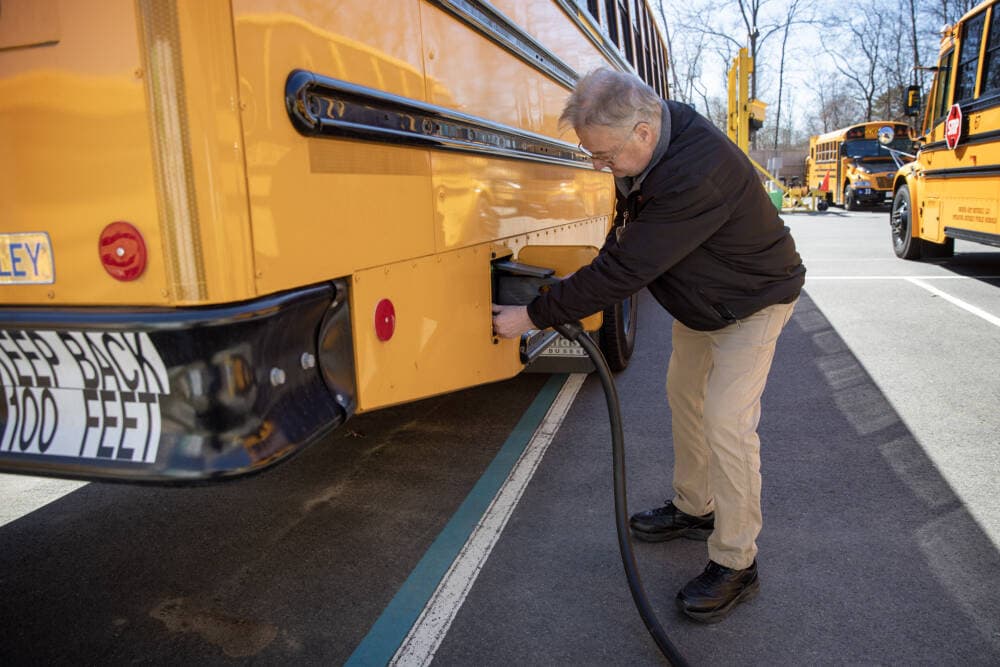
Summertime in New England is when people demand the most electricity from the grid because of air conditioner use. At those high-demand times, utilities turn to so-called peaker plants to supply the extra power. They’re often older, more polluting facilities, and they are expensive to run. But a project in Beverly offers an alternative on-demand power source: the school district uses their electric school buses’ giant batteries as mini power plants to send energy back to the grid.
Beverly Public Schools is one of the first in the country to use its electric buses for more than transportation. The project uses bidirectional chargers that can both charge the bus battery and also allow the battery to send energy back to the grid.
The program in Beverly started in the summer of 2021 with one bus. Last summer, it increased to two buses and it sold seven megawatt hours back to the grid — the equivalent to powering over two hundred homes for an entire day. This summer, the school district expects to use three out of their four electric buses to provide backup power.
Electric buses are ideal backup power plants for two reasons. First, they carry a big battery – a lithium ion battery with three times as much capacity as an electric car. Second, the school buses usually don’t have a “summer job.”
“It's perfect because in the summer when they'd traditionally be sitting around literally doing nothing, now they can be called on to discharge to the grid,” said Sean Leach is director of technology at Highland Electric Fleets, the company working with Beverly Public Schools.
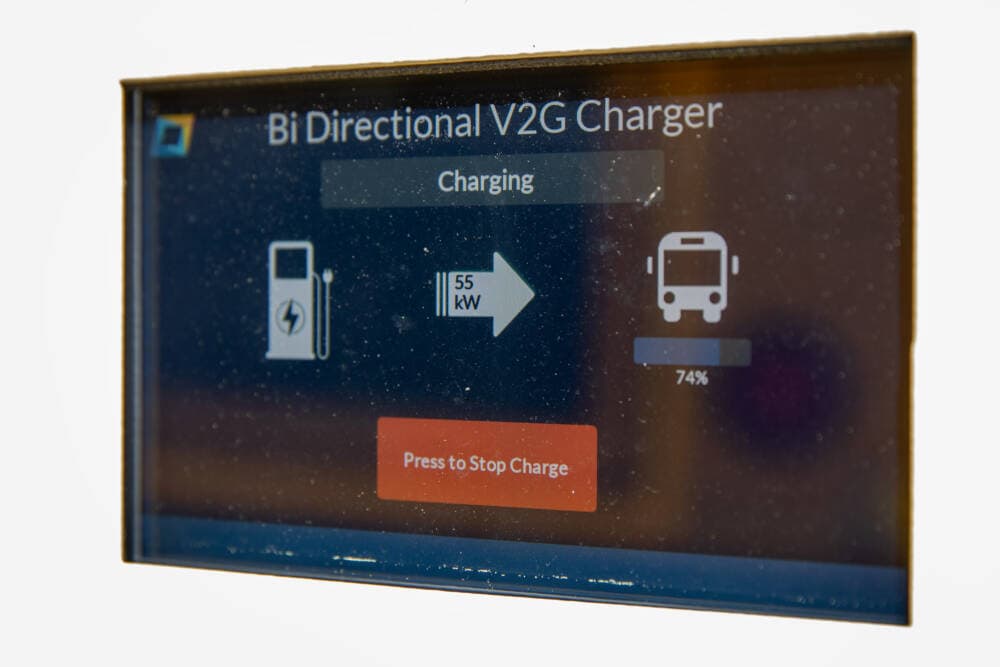
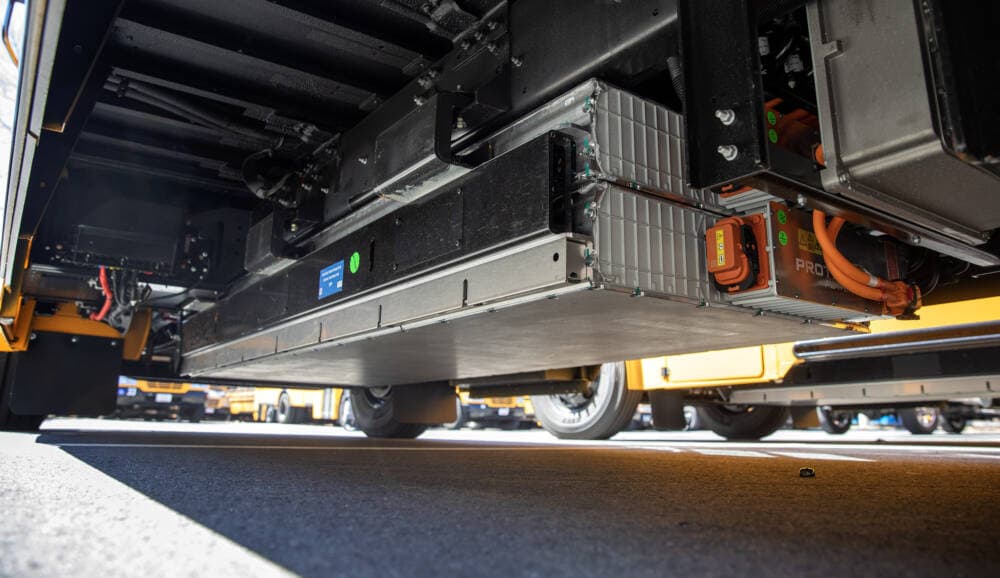
The concept is simple, but the execution is complicated. That’s where Highland Electric Fleets comes in; the company has made a business out of buying and then leasing electric buses to schools. It orchestrates everything from constructing the chargers on site to managing charging and discharging of the batteries. The company also maintains the buses and trains the drivers. Highland Electric Fleets sells this service to schools for about the cost of a regular school bus.
“It makes it a lot more affordable for a small school district like ourselves,” said Dana Cruikshank, director of transportation for Beverly Public Schools.
Projects like this need to work in partnership with an utility company – in this case, with National Grid. The utility usually alerts Highland Electric Fleets before they anticipate needing power. Then Highland makes sure the buses are charged and plugged in.
“Then software takes over and everything fires off as it should,” Leach said. “And then once the buses discharge, they actually recharge later on in the evening when power is less expensive and the grid is less taxed.”
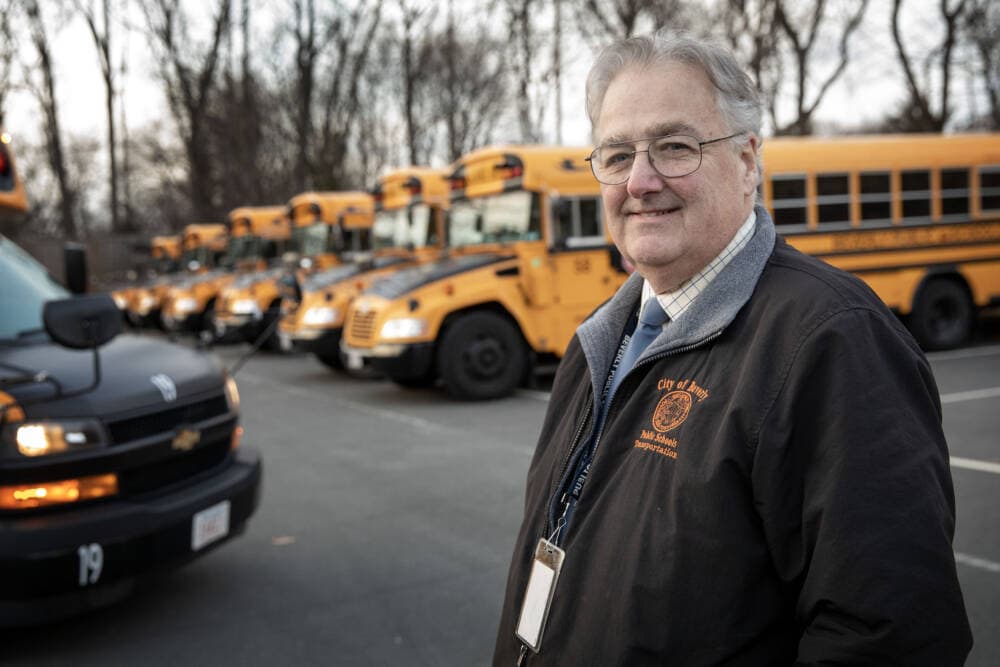
Highland Electric Fleets has another electric bus-to-grid project in Vermont that will begin this summer. The company already leases more than 100 buses, and hopes to create similar projects with those vehicles.
Hypothetically, if all 9,000 of Massachusetts school buses were electric, National Grid estimates they could potentially contribute 450 megawatts during peak times, equivalent to powering 375,000 homes.
“We expect over the coming years, you know, many more customers to be interested in this technology,” said Jake Navarro, director of clean transportation for National Grid.
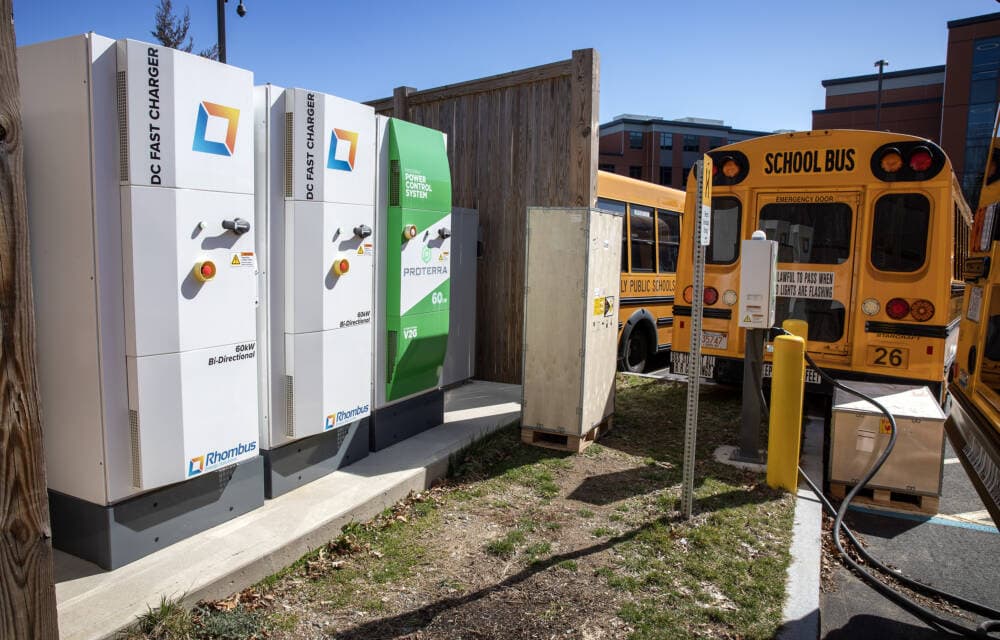
Cruikshank, from Beverly Public Schools, said it’s exciting to be one of the first electric bus-to-grid projects in the country. Many school districts have reached out to him to learn how they could replicate the project. He hopes that if every school makes a small effort, together they can make a big difference for the planet.
This segment aired on April 18, 2023.
